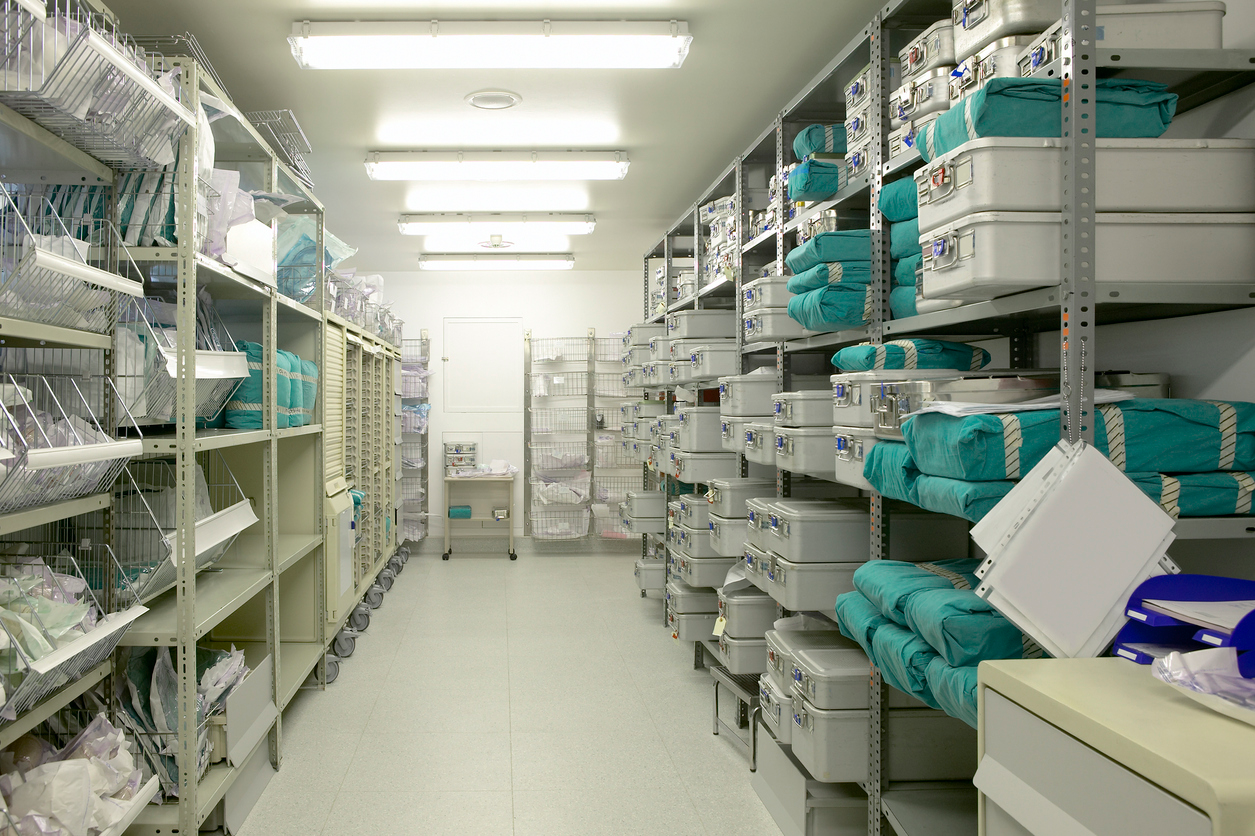05/16/2023
Why Healthcare Supply Chain Management Is Vital to the Industry
Ensuring products end up with customers is an important objective for most businesses, but it is absolutely critical in healthcare, where lives depend on receiving supplies and medications. Delivering quality patient care in a timely fashion is crucial as is evidenced by the recent COVID-19 pandemic.
Connections and communications between suppliers, manufacturers, and distributors must facilitate the movement of goods, services and information. That way, hospitals and other healthcare facilities can better meet patient needs and improve their financial results.
Getting Products to Patient Care in the Supply Chain
The right medical products also need to be delivered to patients at a specific time. Ideally, the whole supply chain should be designed to lower costs and improve patient care and safety by preventing delays in treatment.
Once in place, effective supply chain management can help to reduce medical errors caused by incorrect or expired medications being used on patients.
Effective healthcare supply chain management usually results in better patient outcomes through the improvement of healthcare costs and access to necessary resources for health professionals.
The Benefits of a Successful Supply Chain
When hospitals effectively manage the movement of goods from manufacturers and suppliers to providers, it can help them to streamline processes, maximize operating efficiency, and minimize waste.
Keeping Inventory in Check with Supply Chain Management
Supply chain management can ensure that hospitals can track inventory to quickly identify possible shortages or any other issues with product availability. As a result, well-priced medical devices and supplies will be available when healthcare professionals need them.
Connection and Collaboration Lead to a Stronger Supply Chain
As far as healthcare supply chain management is concerned, good communication between providers and vendors ensures that every group is on the same page as far as ordering supplies or scheduling appointments.
Budget and cost management comes into play as well, because a strong supply chain can help organizations reduce unnecessary spending on operational costs, including materials and unproductive labor.
The COVID-19 Pandemic Disrupted the Healthcare Supply Chain
The COVID-19 pandemic highlighted the shortcomings of supply across the U.S. and around the world, according to Supply Chain Quarterly.
Consequently, hospitals and healthcare groups faced shortages of everything from personal protective equipment (PPE) to medications to ventilators.
A Broken Supply Chain
The pandemic exposed the weak links in the healthcare supply chain, including an over-reliance on limited suppliers and insufficient inventory management.
It emphasized the need for a more adaptable healthcare supply chain, better coordination among global stakeholders, and more well-defined contingency plans.
PPE and Medications Disappear from the Supply Chain
Demand for PPE – including the masks, gowns, gloves, and medications that healthcare workers needed to work safely – soared as the pandemic began to rage. The supply chain was unable to keep up with this once-in-a-century event.
The overwhelming demand for PPE created huge shortages as manufacturers could not meet the needs of their customers.
In addition, ventilators, oxygen tanks, medication, and other materials for tests and treatments were also in short supply.
Many countries shut their ports and borders. The closures negatively impacted transportation and led to the shortages of critical supplies and raw materials.
On top of that, several factories and distribution centers were shut down temporarily, further hampering the production and distribution of critical medical supplies.
New Resilience in the Supply Chain
The healthcare industry was forced to adopt new strategies, innovate quickly, and find alternative sources to overcome disruption and ensure the optimal delivery of care to patients.
Unfortunately, these changes resulted in price gouging and other unethical practices.
Additional Challenges to the Healthcare Supply Chain
While COVID-19 presented major unforeseen challenges for healthcare supply chain management, there are still many other challenges to face and problems that need solving, according to Revalize.
Improving the Supply Chain Means Finding Other Solutions
It is essential to create alternative solutions to solve healthcare supply chain management problems. Some of these problems include:
- Overnight shipping – More than a nice-to-have, overnight shipping is crucial when it comes to managing emergencies. However, constant overnighting of products can become very expensive if inventory management is ineffective.
- Hidden costs – Wavering prices and quality downgrades can lead to excessive charges.
- Drug shortages – Not a new issue, drug shortages have become more frequent because of supply chain disruptions. The result? Healthcare providers may have to buy more costly alternatives or create an expensive backup product inventory.
- Data shortages – Supply chain performance data can sometimes be hard to find. Hospital officials can’t make informed decisions when there’s no data or real-time reports readily available.
- Lack of integration – Even though there’s been a lot of consolidation in healthcare with mergers and acquisitions aplenty, supply chain management and supply chains tend to remain in silos. As a result, supply change managers see wasted products and less profit.
- Ineffective charge capture – Providers turn patient claim codes into charges. Mistakes in patient charges are one of the biggest reasons for lost revenue.
- Physician preferences – The products physicians and healthcare professionals prefer to use can often be highly expensive. Those costs leads to lower profits and lower quality care for patients.
- Poor workflow design – Healthcare and supply chain systems can often repeat a number of processes because of disconnects that occur between groups and systems.
How to Make Healthcare Supply Chains Better
Health systems realize how imperative it is to not only have a robust supply chain, but to increase savings as well, according to McKinsey & Company.
A full supply chain is often part of health groups’ outside spending—up to 40% of all costs.
A healthcare supply chain that functions at an optimal level can increase resilience, improve patient care, and raise physician satisfaction.
It can also lower spending on supplies by up to 10% and set health groups up for accelerated growth.
Specific Solutions to Create a Well-Functioning Supply Chain
There are various solutions that can be utilized to create a well-functioning supply chain, including:
- Collaboration between executives and clinicians on the front line – Clinicians can offer insight on choosing suppliers, setting up contracts, managing the supply chain contracting and utilization, and reaching other organizational goals. Getting clinicians engaged can be done by making sure that there is sponsorship from senior clinical leaders such as the Chief Medical Officer, Chief Clinical Officer, Chief Nursing Officer, and service line chairs. These leaders can help drive progress that results in a top-performing supply chain through clinical guidance and clinician confidence and accountability.
- Organizing healthcare providers into formal cross-functional teams – These teams may consist of clinicians as well as healthcare supply chain leaders, who can consider strategic approaches and drive any initiatives around contracts and utilization. One physician should be named as committee chair for each team in order to avoid delays, a lack of savings, or slow initiatives.
- Investing in a team ready to oversee the supply chain – From on the ground activities to corporate or market headquarters, there can be in-person talks between supply chain colleagues and clinicians around products, procedure expenses, and contract compliance. Supply chain professionals with clinical backgrounds can take the lead by undertaking a number of in-person interactions. These interactions include supporting the launch of initiatives, identifying localized opportunities to improve supply chain operations, and creating relationships with physicians and facility leaders.
- Setting clear organizational goals – Supply chains in most big health systems must meet an annual savings target to improve efficiency. Most of the time, other functional and clinical teams don’t offer any input. The result can be mismatched incentives between supply chain teams and other stakeholders, decisions made in silos, obstruction to new initiatives, and a feeling that the supply chain considers savings more important than overarching organizational goals. Three ways to address this issue include initiating joint team savings targets, offering incentives for meeting targets, and paving the way for frequent, transparent reports.
- Paying closer attention to analytics – A large number of health systems don’t give analytics and actionable data the attention they deserve. Building a supply chain that performs well requires a strong familiarity with all the data points, and this attention is missing in a lot of health systems. Oftentimes, external partner group purchasing organizations may have a better grasp of what the health system is spending and utilizing than the health system does. As a result, it is difficult to adequately identify or negotiate savings. Four ways to address this issue include setting up clean, categorized supplies data; providing user-friendly analytical tools; making it easy for users to have quicker visibility into metrics through dashboards in daily operations; and developing a team of data and analytics experts.
A Focus on Upgrading Healthcare Supply Chains
Leaders from both the executive teams and the clinical function must collaborate on all fronts to continue improving healthcare supply chain management.
The COVID-19 pandemic laid bare all the weaknesses and inadequacies of supply chain management in healthcare and chains in the U.S. and around the world.
Preparing Supply Chains for the Future
Health systems have enhanced their supply chains, which have also become a more strategic part of healthcare organizations.
Stronger supply chains will mean better preparation for the next emergency or pandemic in the future.

